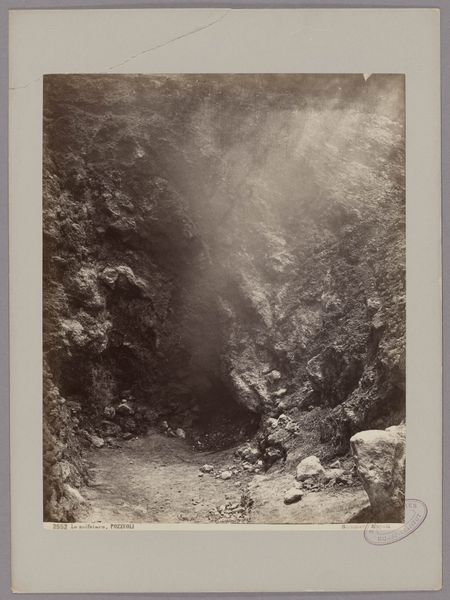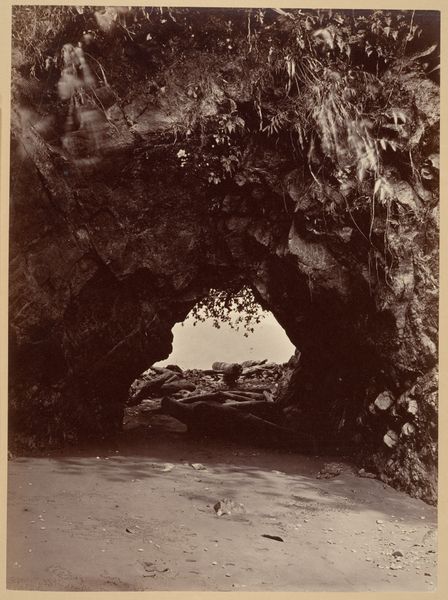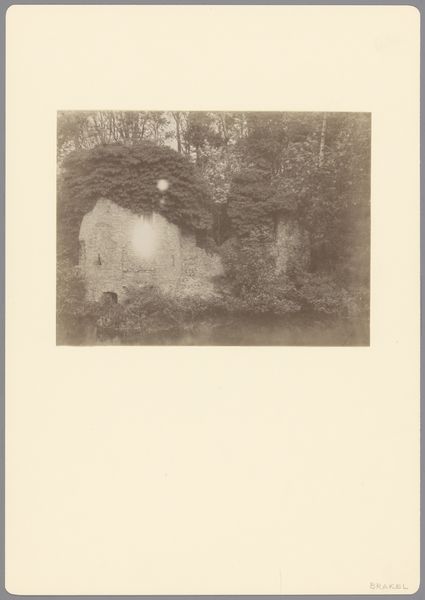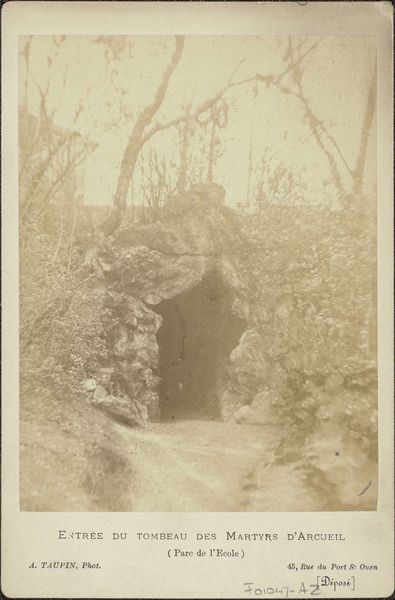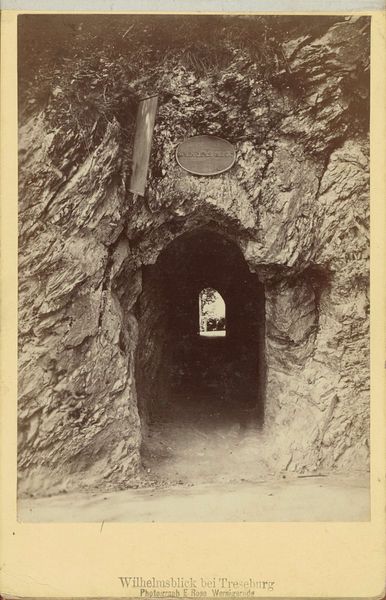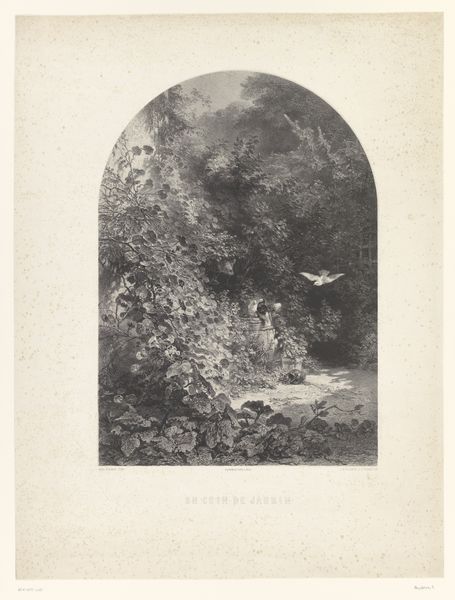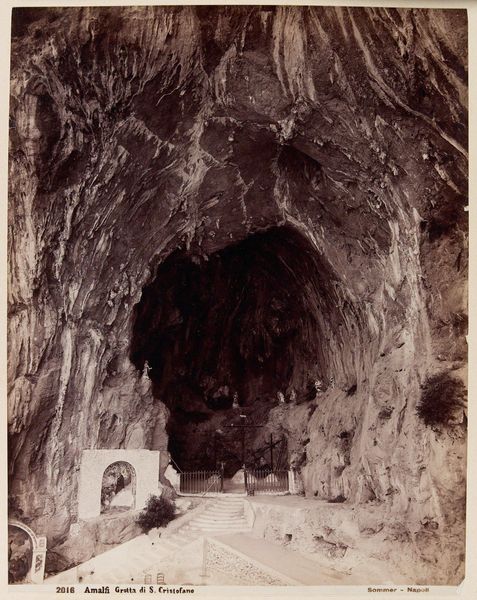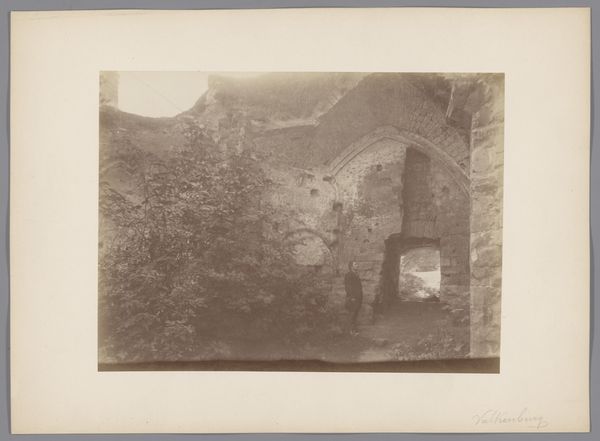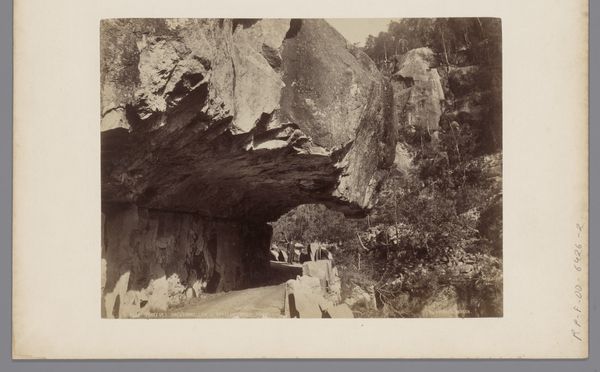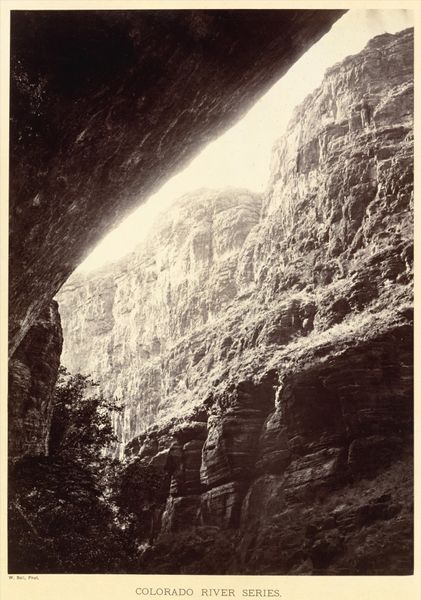
photography, gelatin-silver-print
#
pictorialism
#
landscape
#
photography
#
gelatin-silver-print
#
realism
Dimensions: height 164 mm, width 109 mm
Copyright: Rijks Museum: Open Domain
Curator: This gelatin-silver print, titled "Ingang van de Sint-Pietersberg nabij Maastricht," was captured by Théodor Weijnen sometime between 1880 and 1900. What stands out to you at first glance? Editor: It feels strangely…oppressive. Despite being a landscape, the looming darkness of that entrance almost swallows the scene. It speaks to the industrial era's insatiable hunger for resources, devouring even nature itself. Curator: Indeed. The entrance, shrouded in shadow, becomes an imposing symbol. The lone figure sitting at the edge is almost dwarfed by it, hinting at our complex relationship with these geological formations, especially considering how they feature in so many origin myths and underworld journeys. Editor: Right! It’s almost a literal depiction of the exploitation of labor in relation to natural resources. This person could be one of the many workers extracted like the stones they quarry, a visual manifestation of labor, class, and ecological concerns of that era. This kind of visual rhetoric can really bring awareness about the past in order to improve the present. Curator: And it's cleverly framed, isn’t it? The photographer seems to guide our gaze into that void, knowing our fascination with the unknown. He invites us to contemplate the cyclical nature of history; perhaps the individual depicted might have thought that stone would stand for ages as well! Editor: The subdued color palette also enhances that feeling, it drains vitality away, amplifying that stark contrast between light and impenetrable darkness. You could say that by choosing this muted palette Weijnen might have used it to reveal the darker side of progress...literally! Curator: Absolutely, these images also are time capsules that allow the memory to linger over time, which could explain why these landscapes invite philosophical contemplations: there's an almost primordial stillness. What echoes of memory will emerge? Editor: Well, in all honesty, for me, it’s a powerful reminder of the cost behind grand structures. Looking back, it highlights ongoing issues like worker's rights, our rapacious treatment of the natural world and encourages reflection. Curator: Agreed. I appreciate how these photographs allow us to think about symbols over long periods, because to interpret and pass along its messages can shift people's thinking toward these lasting effects!
Comments
No comments
Be the first to comment and join the conversation on the ultimate creative platform.
